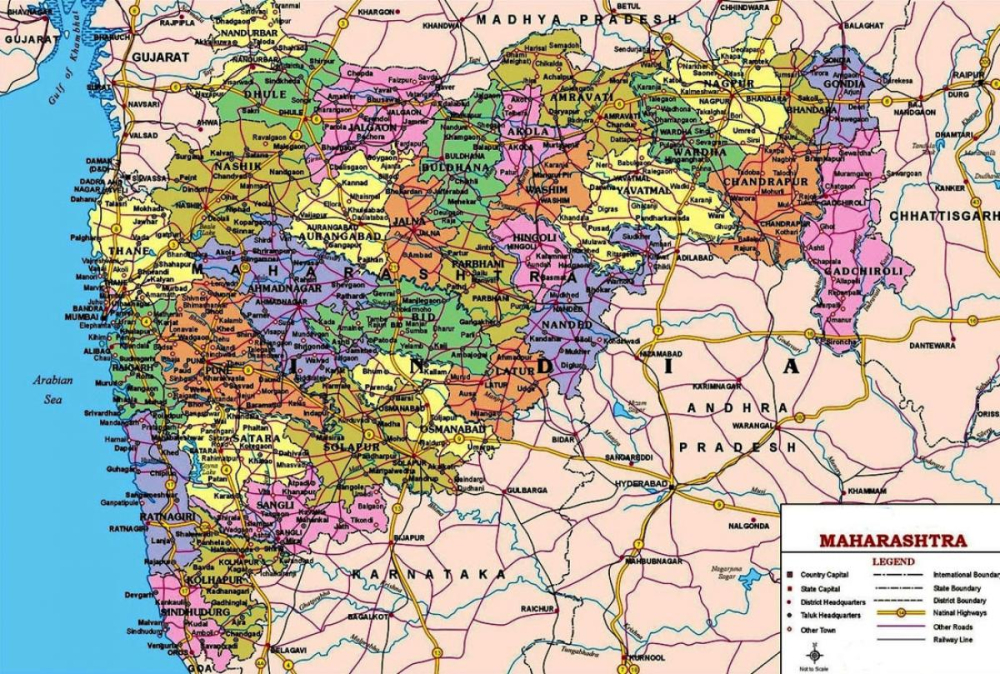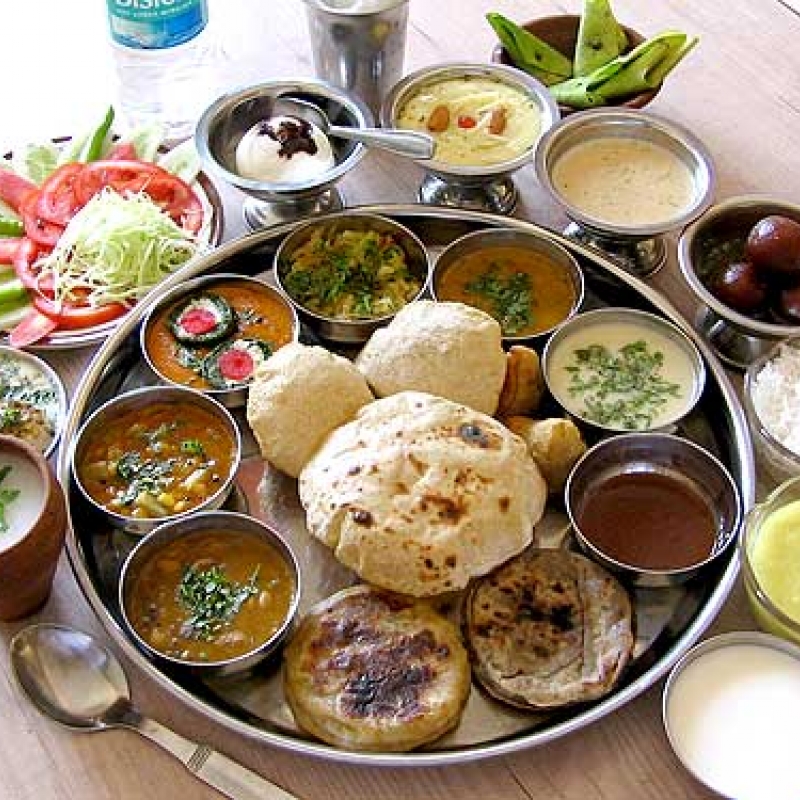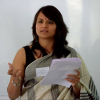What shall I tell you, my lady, of the secrets of nature I have learned while cooking?
One can philosophize quite well while preparing supper.
I often say, when I have these little thoughts…
Had Aristotle cooked, he would have written a great deal more!
~Juana Ines de la Cruz
Khana and Cultural Khazana
The existence of cuisine and the importance attributed to it have proved time and again the emotions it is capable of stirring among individuals and communities. Referring to the observation in Appadurai (1981) that food has the “capacity to mobilize strong emotions”, Gibson (2007:3) draws from Lupton (1996) to propose that “food ‘stirs the emotions’ precisely because of its physical substance, its sensual properties, and its wider social and cultural meanings as a marker of identity and difference”. Food functions as an important marker of identity, agency and space and thus, becomes an important point of interaction of cultures in the consistently globalising world.
It is important to understand, at the very outset, what we mean by the two words, ‘food’ and ‘cuisine’, most often used interchangeably. While food indicates the wide variety and combinations of physical substances consumed for nutrition and healthy survival, cuisine goes beyond the physical realm. Kittler and Sucher (2008:3) discuss the fact that humans ‘eat’ rather than merely ‘feed’ like animals, owing to the efforts put in to nurture and treat the food consumed. The development of food habits (also called food culture or food ways) clearly indicates that for humans, food is more than just nutrients. Humans use foods symbolically, due to relationship, association, or convention.
Cuisine, however, may be understood as food along with associated systems. Thus, cuisine includes processes of buying, cooking and eating, which also imply the set of practices, traditions and conventions linked to these processes over space and time. Although both food and cuisine are dynamic concepts, cuisine comprises wider political, economic and social meanings related to the more physical sphere of food. Interactions between cultures at the level of cuisine allow for discussions on not only food items but also ingredients, cooking techniques, eating and serving conventions. Thus, cuisine may be understood as the larger spatio-temporal experience of food, a dynamic site of oppression and resistance, which is laden with questions of identity and difference.
Ideas of nation, region and sub-region are often crystallized through a comparison of food ways. Conversely, spaces demarcated politically also mediate our imagining of community and cuisine. The neighbouring states of Gujarat and Maharashtra were demarcated politically along linguistic lines on 1st May, 1960, and have since been touted as dissimilar. However, several similarities may be found in the cuisine in certain pockets, especially along the borders, and this stands true for most political divisions of region and nation. The quest to appreciate ‘Maharashtrian cuisine’, therefore, must start with the knowledge of cuisine as a fragmented, fluid entity, intrinsically linked to geography, and not limited by territorial boundaries. The idea would be to understand food practices and dishes which are shaped by social, economic and spatial arrangements within the said territorial region. One could propose that ‘authentic’ Maharashtrian cuisine has had its roots in the culture and practices of powerful communities. Apart from few regions with access to resources, negotiations of marginalised communities with abject conditions have shaped foodways and memories.
Maharashtra: A brief background

Maharashtra is the third largest and the second most populated state in India. It comprises 36 districts and shares its borders with six states, namely, Gujarat, Madhya Pradesh, Chhattisgarh, Andhra Pradesh, Karnataka and Goa. The Mumbai Sub-urban district, Thane and Pune districts are the most populous and have higher levels of urbanization compared to other regions. A rough division of Maharashtra, in terms of geography and political identity is commonly done as follows: Khandesh and Nashik (North), Pune (Central), Vidarbha, Marathwada (East) and Konkan (West).
The state is diverse in soil and climate, as well as population and resource allocation. The coastal Konkan region has maritime climate, laterite soil and is blessed with paddy fields, coconut trees and swelling seasonal rivers. The eastern regions of Vidarbha and Marathwada, on the other hand, are drought prone and arid, and infamous for underdevelopment and poverty. The state is diverse linguistically too, with 38 languages including Hindi, English, Konkani, Malwani, Varhadi, Ahirani, Dangi, Khandeshi and 12 dialects of Marathi (Bhasha Research and Publication Centre 2013).
Maharashtra is one of the wealthiest states in the country, and most of it is concentrated in urban centres (Mumbai, Pune, Nagpur, etc.), including the sugarcane belt (Kolhapur, Sholapur, Ahmednagar, etc.). High levels of urbanization and financial growth in western region are juxtaposed with harsh poverty in traditionally exploited, backward eastern and Konkan regions. Since the inception of the state, eastern Maharashtra has largely remained neglected and economically exploited and the political movement for a separate Vidarbha state has gained and lost steam at several moments. Needless to say, the divergent conditions and realities of the various majority and minority communities in the state inform the complex notion of Maharashtrian cuisine.
The Marathi manoos and his plate
The identity of the ‘Maharashtrian’ has been revisited and redefined time and again. Who belongs to Maharashtra and whom it belongs to, have been points of contestation and violence. A symbol at the centre of these contestations has been food and it would not be erroneous to propose that the role of food in the state has gone beyond merely nutritive and culinary. Food items, dishes and practices have been made to interplay with space and geography to demarcate political and social identities.
An example would be the Shiv Sena’s campaign to invoke Maharashtrian identity through the wada pav in opposition to the ‘foreign, migrant’ idli and wada in the '60s. It rose in conjunction with the ‘lungi hatao’ campaign at the time, which claimed that migrants to Mumbai from southern states were taking away jobs rightfully belonging to ‘original’ residents of the region, a monolithic, imagined community of Maharashtrians. The wada pav, an amalgamation of the formerly Portugese ‘pao’ (bread) and a spiced, battered and fried potato ball ('wada'), was sought to be made into the symbol of the Mumbaikar and by extension, the Maharashtrian. The Congress later plunged into this war of dishes with the Congress kanda pohe, a salted, spiced mixture of rice flakes.
Maharashtra is home to several minority communities including dalits, adivasis, Muslims, Christians and Parsis. The documentation of Maharashtrian cuisine, has by far, been restricted to the cuisine of the upper castes. Several cookbooks on brahmin cuisine have been written since the early 19th century, reflective of upper caste-class access and dominance over education. The trend continues today with food and travel television and cookbooks, which have made space for Maratha and brahmin Konkani food. They largely represent abundance, and Maharashtra, save some pockets, has seen immeasureable food scarcity and lack. This explains the larger focus in recent academic and creative work on ‘reclaiming food’ rather than merely documenting recipes through prolific dalit poetry, filmmaking and academic writing.
The last few decades have seen a significant shift in the growth and consumption of indigenous grains such as jowar (sorghum) and ragi, in what may be a result of changing crop patterns and upward mobility. Climatic conditions and the water shortage in the major part of the state support the growth of millets, but recent times have seen a shift towards cash crops such as cotton and soyabean, a move that has worsened the debt crisis and farmers’ suicides. While some articles in this module engage with these changes and mark transitions in the food market through oral histories and memory in the Konkan, a concise cookbook tries to document lesser known recipes of villages in Ahmednagar region.
A conversation on food in Maharashtra would be incomplete without the recent heated debates around the ban of cow slaughter. Through a critical engagement with the issue along lines of caste, access, livelihood and nutrition, this module tries to look at the demonization of meat eating and the rights of minority communities. A distinct experience of food culture in the state is also linked to tea drinking spaces typical to most streets—the ‘tapris’. Through excerpts of work that reclaims space and agency in the city of Mumbai, we get a peek into the gendered nature of chai-tapris vs. Irani cafes and expensive coffee shops. In continuation, the module also engages with the Irani cafe culture in Mumbai and its inextricable link to the working class, now facing systematic invisibilization.
The idea of this written and audio-visual collection is to create an inclusive culinary journey that builds a comprehensive understanding of issues and practices that render the state a dynamic space. From food culture built by the dabbawallahs in the buzzing metropolis, memory and migration in the Konkan region, to an engagement with dalit and tribal cuisine and food security in eastern Maharashtra, this is an attempt to understand the culinary stories of Maharashtra in all its complexity and charm.
Sources
Ambedkar, B.R. 1955. ‘The Division of the North’, in Thoughts on Linguistic States. Bombay: Ramakrishna Press. Online at http://www.ambedkar.org/ambcd/05C.%20Thoughts%20on%20Linguistic%20States%20PART%20III.htm
Appadurai, Arjun. 1981. ‘Gastro-Politics in Hindu South India’. American Ethnologist 8:494–511.
Avakian, Arlene Voski & Haber, Barbar, eds. 2005. From Betty Crocker to Feminist Food Studies: Critical Perspectives on Women and Food. University of Massachusetts Press.
Benhur, Dayakar, ‘Pattern and Shifts in Consumption of Sorghum in India’.
Bhasha Research and Publication Centre. 2013. Bharatiya Bhashanche Loksarvekshan (Marathi), ed. Arun Jakhade. People's Linguistic Survey of India, vol. 17, part 1. Pune: Padgandha Prakashan.
Bombay Gazetteer. General chapters
Chatterjee, Srikanta. 2010. ‘Growing Affluence, Declining Nutrition: A Contemporary Indian Quandary?’ Online at www.eefs.eu/conf/athens/papers/502.pdf
Dahat, Pavan. 2014. ‘Vidarbha State a Non-Issue’, The Hindu, Nagpur, October 7. Online at http://www.thehindu.com/news/national/other-states/vidarbha-state-a-nonissue/article6476554.ece
Doctor, Vikram. ‘The Real Food Podcast’. Fortnightly show on Audiomatic. Online at http://www.audiomatic.in/category/the-real-food-podcast/
Economic Times. 2006. ‘Rich-Poor Divide Stays in Maharashtra’. October 12. Online at http://articles.economictimes.indiatimes.com/2006-10-12/news/27449428_1_poverty-line-lakh-families-rural-development
Ghosh, Shweta. 2012. ‘Performing Food: Changes, Continuities and Disjuncts in Urban, Middle Class Cooking in Pune, India’, Food Studies, An Interdisciplinary Journal. 1(1). Online at www.FoodStudiesJournal.com
Gibson, Sarah. 2007. ‘Food Mobilities: Travelling, Dwelling and Eating Cultures’. Space and Culture 10(1):4–21.
Kittler, Pamela Goyan, Kathryn Sucher and Marcia Nelms. 2008 [2004]. Food and Culture. Belmont: Cengage Learning.
LeBesco Kathleen, and Naccarato, Peter, eds. 2008. Edible Ideologies: Representing Food and Meaning. New York: State University of New York Press.
Lupton, Deborah. 1996. Food, the Body and the Self. London; New Delhi: SAGE Publications.
Maguelonne Toussaint-Samat. 2009 [1987]. A History of Food. Rev. edition, translated by Anthea Bell. Oxford: Blackwell Publishing Ltd.
Mukadam, Mohsina. 2012. ‘Traces of Culinary Traditions of Maharashtra’, November Seminar, Institute for Oriental Study, Thane. Institute for Oriental Study, December 12. Online at http://www.orientalthane.com/seminars/nov_seminar/9.htm
Phadke, Manasi. 2015. ‘Mumbai Meat Ban: The Politics behind the City’s Veg vs Non-Veg Divide’. Indian Express, September 20. Online at http://indianexpress.com/article/india/india-others/sunday-story-meat-ban-2/
Sadhu, Arun. 2007. Maharashtra. New Delhi: National Book Trust.
Tagade, Nitin. 2011. 'Food Security in Maharashtra: Regional Dimensions'. Working Paper: The Institute for Social and Economic Change. Bangalore: The Institute for Social and Economic Change.
Vepa, Swarna Sadasivam. 2004. ‘Impact of Globalization on the Food Consumption of Urban India’, in Globalization of Food Systems in Developing Countries: Impact on Food Security and Nutrition, pp. 215–30. Rome: FAO. Online at http://www.fao.org/3/a-y5736e.pdf

